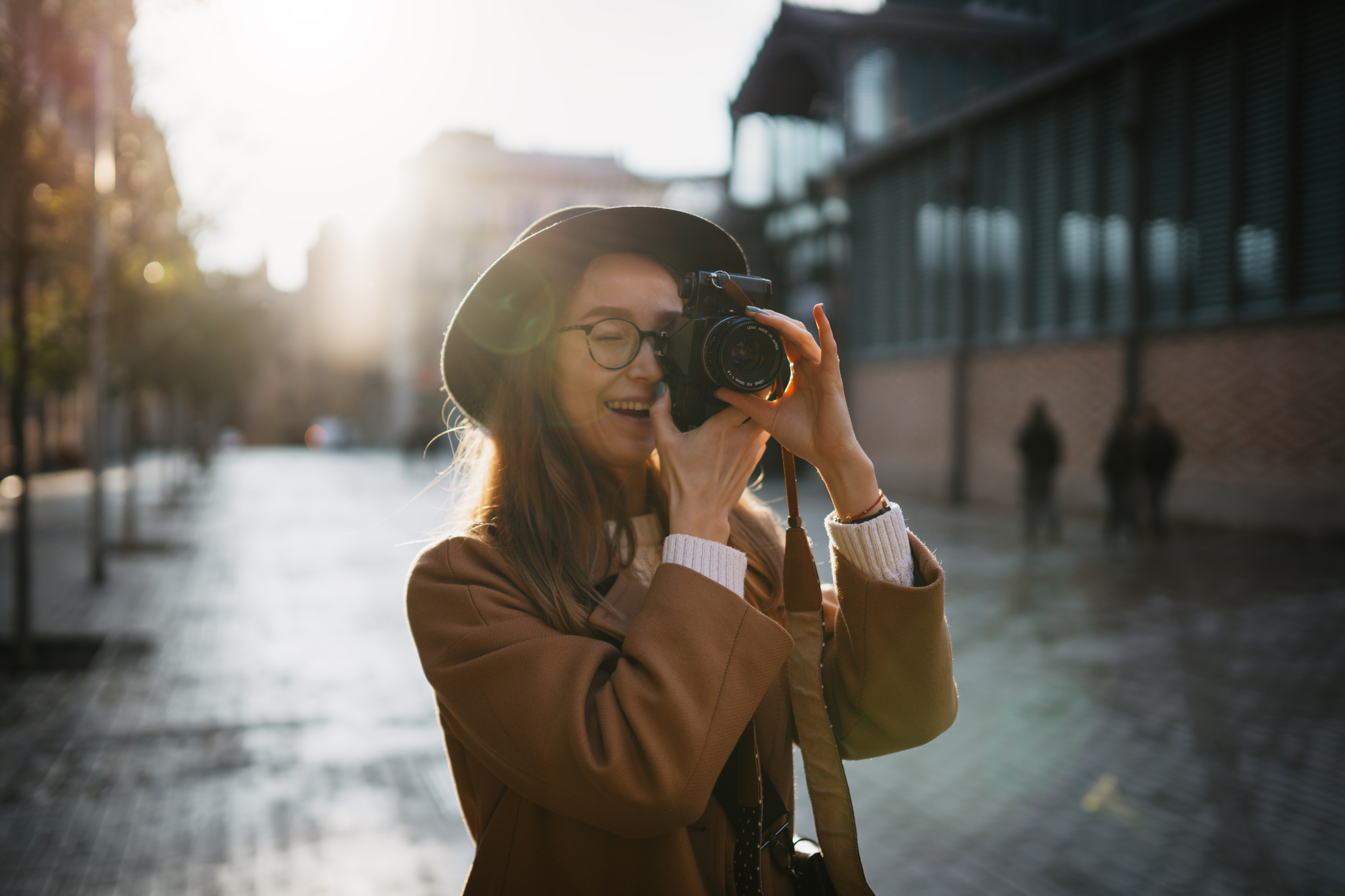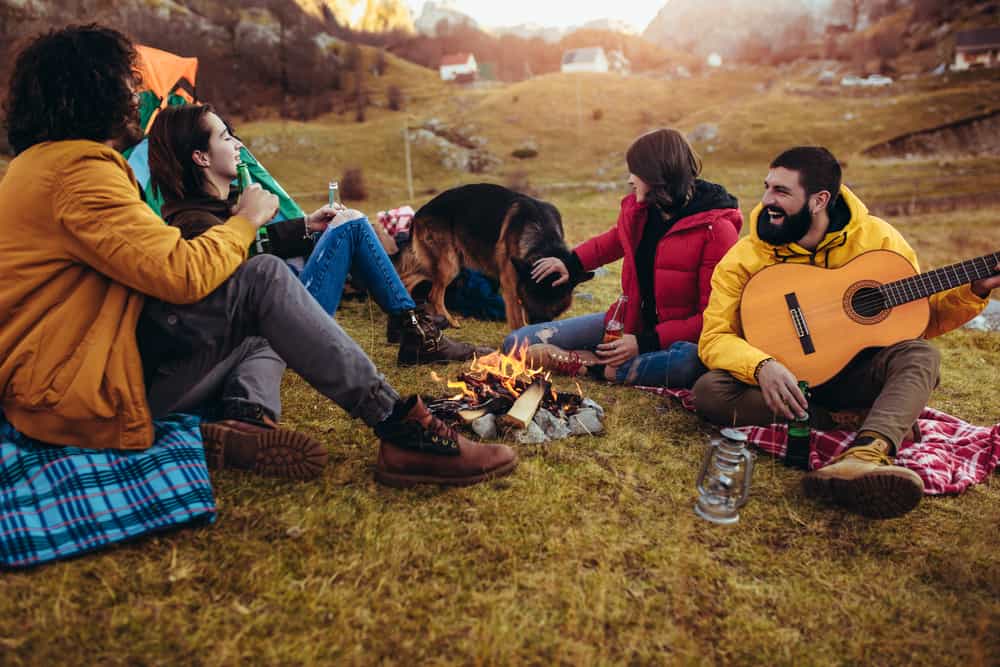Take time to explore
Get close to the forest, get acquainted. Explore the area, walk around with curiosity. Take some time to see what the forest has to offer, what shapes and colors it has, how it changes during the day, and with different weather conditions. Note your observations and start generating the ideas as you take your test shots. Pick attractive spots for your pictures of a forest and merge with the magic atmosphere out in the woods to bring incredible images home.Bring different lenses
 Don’t forget to take different lenses with you. Focusing on the big picture, giant trees, and forest atmosphere is great, but there are dozens of small details you might want to capture. It will be a great idea to have extra gear if you’re planning to shoot people or want to use a flash to shoot closer to night time.
Don’t forget to take different lenses with you. Focusing on the big picture, giant trees, and forest atmosphere is great, but there are dozens of small details you might want to capture. It will be a great idea to have extra gear if you’re planning to shoot people or want to use a flash to shoot closer to night time.
Types of lenses to take with you:
- Long or telephoto lens. It allows making shots with tighter compression and helps you capture a specific picture of a more isolated subject. It also softens the background and focuses on the foreground elements.
- A wide lens is best when capturing the wood’s vastness and the volume of its tall trees. You can also use a wide lens to focus on the small foreground objects.
- A macro lens is essential in forest photography, so you don’t want to leave it at home. A lot is going on at the woodland’s ground level and you don’t want to miss it with a lens that can’t focus on those details. Right under your feet, you can find the microcosm of life – interesting plants, animals, or insects. Slow down and take a closer look through your macro lens.
 The golden hour is magnificent. This particular photography genre is popular because of the fascinating soft light flowing through the leaves and illuminating all the unique hues. It creates a unique glowing atmosphere, and you can experiment with your shots as the light continues to change in these hours of the day quickly.
Don’t hesitate to shoot throughout the day too. You can capture some moody shots with the sun blocked by the canopy. Many areas will also be brighter because of the harsher rays.
The golden hour is magnificent. This particular photography genre is popular because of the fascinating soft light flowing through the leaves and illuminating all the unique hues. It creates a unique glowing atmosphere, and you can experiment with your shots as the light continues to change in these hours of the day quickly.
Don’t hesitate to shoot throughout the day too. You can capture some moody shots with the sun blocked by the canopy. Many areas will also be brighter because of the harsher rays.
Capture rainy and misty days
Shooting on a rainy or foggy day is ideal for forest photography, unlike some other genres. Sometimes, misty or rainy days can add mystery. For example, mist completely transforms the environment and adds a touch of an enigma to forest shots. Rainy days and fog are the best for getting creative with the cinema-noir shots. Nature looks more vivid, and scenes become vibrant right after the rain. Keep in mind that it’s risky to go out shooting on a rainy day if you don’t have protective gear for your camera (or for yourself, as a matter of fact). This type of photoshoot can get messy, so experiment with rainy days when the forecast gives you that green light of a few hours with no rain.
Rainy days and fog are the best for getting creative with the cinema-noir shots. Nature looks more vivid, and scenes become vibrant right after the rain. Keep in mind that it’s risky to go out shooting on a rainy day if you don’t have protective gear for your camera (or for yourself, as a matter of fact). This type of photoshoot can get messy, so experiment with rainy days when the forecast gives you that green light of a few hours with no rain.
Don’t get hung up on technicalities
Forest photography is rather unexpected: one day, you have a couple of shots, next time, you come back with hundreds of photostories. Sometimes it is better to stop looking for perfect compositions and spend all your time on ideal camera settings. There is just so much going on in the forest! Take your dog for a walk, grab a camera, and start exploring as you’re also enjoying the landscape yourself. It can seem like nothing is worth capturing. Take the next turn, and everything can change. You’ll be surprised how many beautiful shots you’ll take just following your eye and intuition. When you try too hard to create the perfect composition based on some rule you remember, sometimes you kill the fun. With a relaxed and laid back approach, you can have much better results. Just wander around and see what catches your eye. Trust your gut.
Try using a long focal lens and wide aperture to get the background out of focus, or use your environment to add depth to your shots with natural shadows.
You’ll be surprised how many beautiful shots you’ll take just following your eye and intuition. When you try too hard to create the perfect composition based on some rule you remember, sometimes you kill the fun. With a relaxed and laid back approach, you can have much better results. Just wander around and see what catches your eye. Trust your gut.
Try using a long focal lens and wide aperture to get the background out of focus, or use your environment to add depth to your shots with natural shadows.
Use leading lines
 Capture leading lines in your composition to invite your viewers to an imaginary journey through the forest. It is often an angle of the road with forest photography that can lead the eye to the most detailed part of a shot or the leading lines formed by a unique perspective to distort giant trees. Other leading lines could be the rays of light oozing between the giant trees and causing shadows among them.
Capture leading lines in your composition to invite your viewers to an imaginary journey through the forest. It is often an angle of the road with forest photography that can lead the eye to the most detailed part of a shot or the leading lines formed by a unique perspective to distort giant trees. Other leading lines could be the rays of light oozing between the giant trees and causing shadows among them.
Experiment with the shutter speed
You can create unusual shots experimenting with the shutter speed. Just keep trying. Sometimes you are not using any familiar or specific techniques and create pretty impressive shots in the end. Here’s one of the tricks:- Place your camera on a tripod
- Select a slow shutter speed
- Slowly tilt the camera upwards









